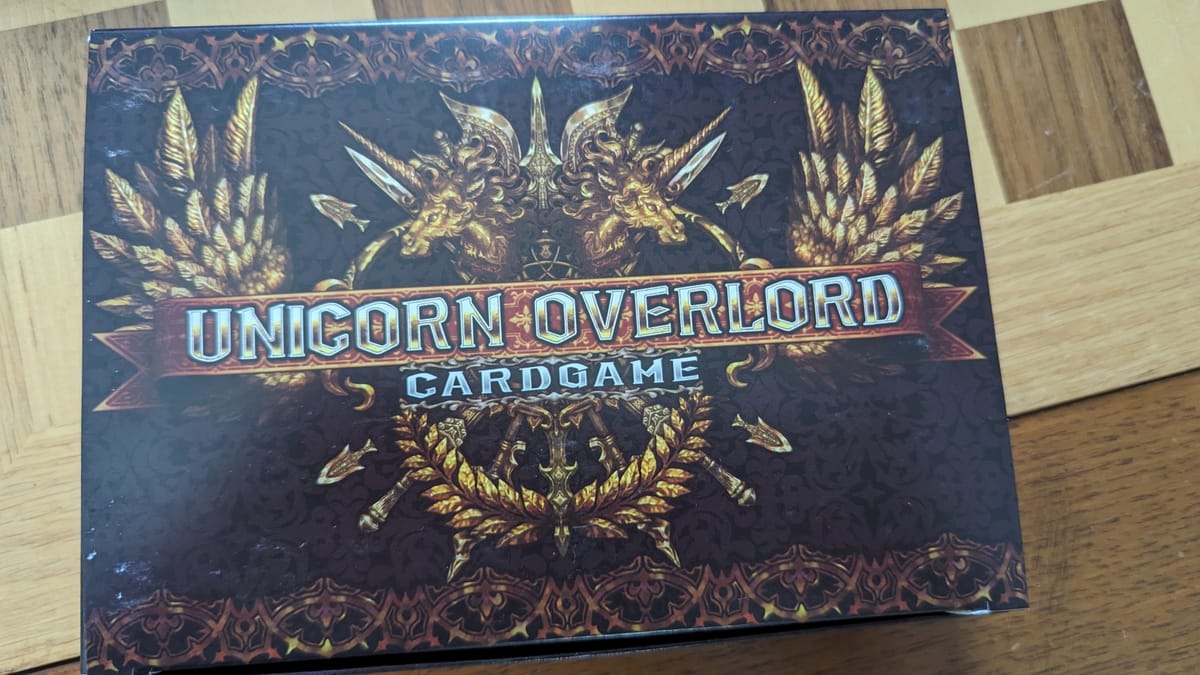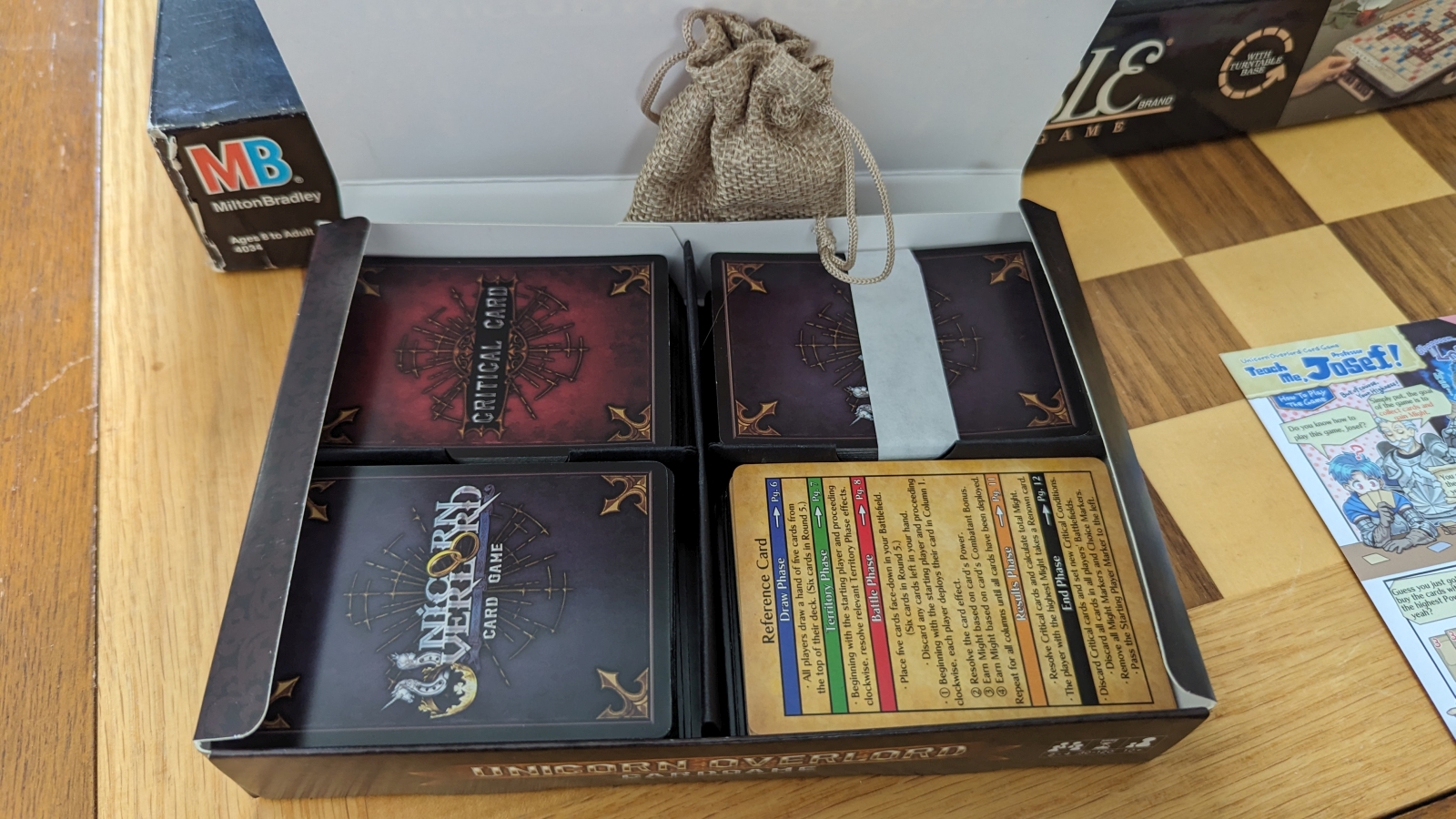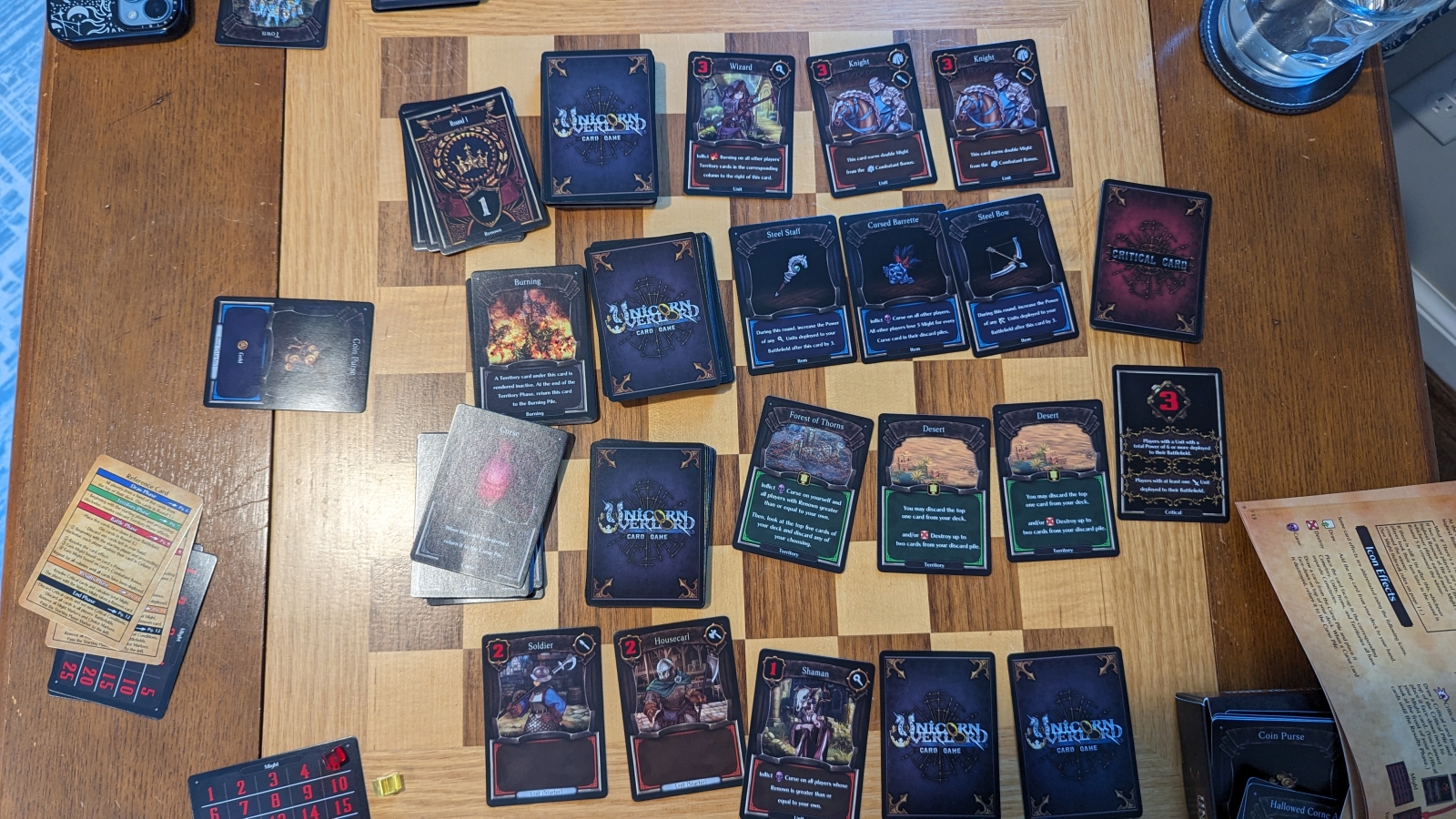
I don’t really play board games, card games, or anything tabletop. Not because I’m not interested – I own the starter set for Dungeons and Dragons – but because I almost never have people to play them with. However, I enjoyed Unicorn Overlord, Vanillaware’s latest title, so much that I wanted to give the card game accompanying the Monarch Edition a shot. While my inexperience certainly hindered my time with the game, I found a shockingly faithful recreation of the video game’s overall mechanics.
First off, you really should watch the official YouTube tutorial. There’s an instruction manual, manga style quick start guide, and even reference cards for every player, but none of these are really sufficient to figure out what’s going on before a first play. These should be used as clarification during play rather than before. Even then, I’d recommend playing through an example game before really getting started. There’s a lot going on here and it can be difficult to keep up with, especially as a novice to tabletop.

So, Unicorn Overlord essentially recreates the basic structure of the video game of the same name. To set up the playing field, you separate the cards into 7 categories each in their own pile. These are: Units, Items, Territory, Burning, Curse, Renown, and Critical. The first three are placed face down and shuffled, while the middle three are face up. The Critical Pile is an exception and is placed separately from the others facedown, with a card drawn from the top each round. Three cards are drawn from each facedown pile, then placed in a row to create the Marketplace, ending setup.
Each player (1-4) then receives a set of starter cards, which are marked with a white box at the bottom. The set consists of a Fighter, Soldier, and Housecarl for units, as well as three gold, a Hallowed Corne Ash, and the Town Territory. Then, each player will draw three more cards from the Unit Pile, reveal them, then place them with the starter cards facedown in their deck after shuffling. The starter territory is then placed face up in each player’s Province, which is a row of Territories below where cards played in each round are placed.

This is when the Draw Phase begins, the first of five phases that each round consists of. Players draw 5 cards from their deck, which are kept in their hand. Next, is the Territory Phase, in which the effects of each Territory card are resolved in order from left to right, with players taking turns. As in, if player 1 has two Territories, after resolving their first card player 2 would resolve their first card as well before moving on to player 1’s second Territory. For example, the starter Territory allows a player to perform 3 Gold actions, which means they can purchase three cards from the marketplace to add to their hand or Province. If a Territory has the Burning effect on it, symbolized by a burning card placed on it, it is skipped for that Territory Phase, then removed. If a Territory has multiple burning effects on it, only the top burning card is removed at the end of the phase.
Next up is the Battle Phase. Players choose 5 cards from their hand and place them facedown on the Battlefield, a row of cards lining up with the Province row. Any cards left in a player’s hand are placed in the Discard pile, and the battle begins with players taking turns clockwise revealing their played cards and resolving their effects. These effects can include applying burning to a Territory, purchasing something from the Marketplace, putting a useless Curse card at the top of a player’s deck, and much more. Once all cards have been flipped and resolved, each player will then tally up the Might of their played cards. Unit cards have a might number attached to them, but this can be boosted through Territory, Item, or other Unit cards possessing the same symbol. For example, playing two Sword Units will give you +1 Might. You can keep track of your Might using a handy tracker card and a red token. This is the Results Phase, and here any players who meet the requirements of the Critical Card will receive the bonus might displayed on the card for that round. The player with the highest total Might at the end of the round receives the corresponding Renown card for that round. To move on to the next round, players discard all Battlefield cards, draw a new Critical card, reset their Might counter, and once again begin the Draw Phase. Play goes on for five rounds and the player at the end with the most Renown wins.

There are a few more rules, like Bonus Renown and playing six cards in your Battlefield in the final round, but that’s sufficient to understand the game. There’s also an advanced setup, but I did not try that. As I said earlier, it’ll probably take at least one full play of the game to really get a grasp on the basics, but once it gets going things can get very competitive. By round five on our first play, my sister and I were making chains of similar units, utilizing item bonuses, and screwing each other over with curses and burns. That’s just with two players as well, I imagine things would get even more competitive with three or four. By the end of play, I was surprised at how well the game recreates the battles of its counterpart. Setting up a group of characters, using items, and taking advantage of territory perfectly replicates the general flow of the game in a PvP format. Frankly, I’m shocked they’re not selling this separately as I could see it being a great way to pass a few hours with friends, aside from the difficult learning process.
Even so, the rest of the Monarch Edition is no slouch, including a huge art book and two CDs of 16-bit arrangements of the game’s soundtrack. Hilariously, the package Vanillaware sent to me didn’t include a copy of the game itself (they had already sent a digital code for review), but, for a lower price to exclude the game, I could see people buying this just for the card game. It’s not life-changing or anything, but it’s still very enjoyable and has some great art on the cards themselves.
Unicorn Overlord Card Game
Great
Unicorn Overlord Card Game perfectly recreates the experience of the video game counterpart. While it can be difficult to learn thanks to a lackluster manual, guide, and even video, once you get the hang of it it’s a lot of fun.
Pros
- Great artwork
- Handy box for organization
- Perfectly recreates the feeling of the video game
Cons
- Hard to learn
- Complex setup
- Requires a lot of space
